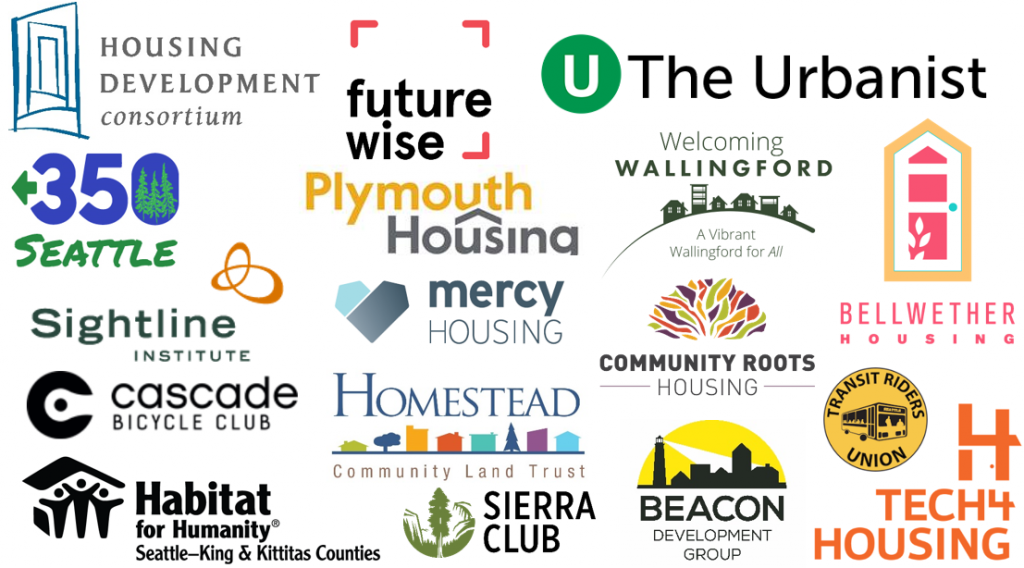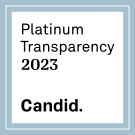HDC Coalition Comment on Seattle Comprehensive Plan Update – Expand Scope for Abundant and Affordable Homes
We, the undersigned organizations, represent a coalition committed to advancing housing affordability and addressing climate change through Seattle’s Comprehensive Plan update, including affordable housing developers and operators, environmental advocates, climate activists, and grassroots housing organizers. We thank you for the opportunity to comment on the scope of the environmental impact statement (EIS) for the One Seattle Plan 2024 Comprehensive Plan update. It is essential that the City analyzes a full range of growth alternatives in the EIS. We urge you to expand the scope of analysis of each of the alternative growth strategies and to advance a new transformative Alternative 6, to provide as much flexibility to build as many homes as possible.
This Comprehensive Plan update is a once-in-a-decade opportunity for Seattle to lead the region by reforming land use, increasing density, and allowing for mixed uses in neighborhoods. At this distinctive moment in time, the urgency of the city’s affordable housing crisis is combined with a growing climate crisis and the disturbing reality of persisting inequities. We cannot ignore the interconnectedness that must bind our efforts inextricably on housing, and climate action.
We have an exacerbated housing crisis; far too many of our neighbors sleep unsheltered, struggle to afford rent, or have been displaced from their communities, all because of how expensive homes in our city are. Simply put, we have a shortage of homes, and we need to build more of them. We need more affordable homes, more sustainable homes, more homes to rent and to own, and more middle homes, apartments, and corner stores throughout our city.
We also face a climate crisis driven by transportation as overwhelmingly our region’s top source of climate emissions, accounting for a whopping two-thirds. Car-dependent sprawl is not consistent with our climate goals or a sustainable future. As the center city of this region, Seattle must lead in welcoming sustainable land use patterns. Per capita emissions are lower in Seattle due to better access to transit, jobs, and walkable neighborhoods. By not welcoming housing growth in its borders, Seattle forces it to the suburban fringe, where residents are locked into car dependency and growth jeopardizes forests and farms.
Of the options currently drafted, Alternative 5 is the only alternative to make a major positive impact on Seattle’s housing costs by allowing for more housing growth to meet demand. Per the City’s analysis, by promoting a greater range of rental and ownership housing, the Combined Growth Strategy would address past underproduction of housing and rising costs and support complete neighborhoods across the city. It furthers climate goals by allowing more people to live in walkable, transit-rich communities near jobs and amenities, and could help create transit-supporting densities throughout Neighborhood Residential zones. And finally, it goes furthest among the five drafted alternatives to correct the racial inequities of historically exclusionary zoning policies.
In addition to advancing Alternative 5, it is essential that all the growth strategies studied include as much flexibility to increase housing supply, diversity, and affordability as possible. A new Alternative 6, should expand on the Combined Growth Strategy with policies to create abundant, affordable housing throughout the entirety of Seattle.
Recommendations to improve the Growth Strategy Alternatives
- Alternative 2, the Focused Growth Strategy, should create or expand new urban villages and maximize housing development capacity in neighborhoods with high access to opportunity and low risk of displacement. The Focused Growth Strategy should ensure that urban villages encompass the entire 15-minute walkshed around frequent transit. Finally, the Focused Growth Strategy should incorporate analysis of high-rise and mid-rise zoning. These housing types maximize density around light rail stations and regional centers, would generate more Mandatory Housing Affordability contributions to expand the city’s affordable housing stock, and could encourage sustainable mass timber construction.
- Alternative 3, the Broad Growth Strategy, should incorporate analysis of a wider range of missing middle housing types than just triplexes and fourplexes. Rowhomes, stacked flats, sixplexes, and courtyard apartments would also fit in well in Neighborhood Residential zones and create new affordable homeownership options. This alternative should also include mixed-use development on corner lots, with an emphasis on allowing uses that meet residents’ essential daily needs.
- Alternative 4, the Corridor Growth Strategy, should incorporate significant upzones in the 15-minute walkshed around transit stations, not just a narrow band directly on arterials. Mid-rise and mixed-use zoning should anchor the 5-minute walksheds around transit stations, with wide swaths of low-rise apartments and missing middle homes permitted throughout the rest of the 15-minute transit walksheds.
- Alternative 5, the Combined Growth Strategy, should incorporate the additional flexibility for housing production from each of the growth strategies enumerated above.
- A new Alternative 6, should expand on the Combined Growth Strategy and be explicitly designed as the anti-displacement alternative requested by the Comprehensive Plan Racial Equity Analysis: it should “end the prevalence of single-family zoning” with a “racially inclusive approach.” This includes anti-displacement overlays in areas of high displacement risk and allowing maximum growth of the most affordable housing types in areas of high opportunity. It could look like a connected network of complete neighborhoods, allowing 4-6 story apartments in all neighborhoods, with bonuses for affordable homes by right, and ground floor commercial and community spaces to serve people’s daily needs. It should explore density bonuses and exemptions from setback requirements for green buildings, to encourage mass timber and passive house techniques.
Beyond specific growth strategies, we recommend that all the alternatives be improved in the following ways:
- All of the growth alternatives OPCD advances for analysis should plan for—at a minimum—a continued rate of population growth similar to what Seattle has seen over the last 10 years.
- The City’s greenhouse gas analysis should consider the regional benefits of preventing sprawl and adding dense, climate-friendly housing in the existing urban core.
- All of the growth alternatives should analyze altering the transportation network concurrently with the land use strategy, to expand the area of Seattle covered by frequent transit service.
- Broadly, all of the alternatives should develop strategies to expand the “15-minute city” concept effectively in residential zones to ensure complete, walkable communities with a mix of housing types with jobs, commercial spaces, schools, health clinics, and parks.
- For all alternatives, locate new nodes of housing and business density in areas that currently have low access to frequent transit service and/or low access to businesses and amenities that provide essential daily needs. Growth strategy alternatives should be designed to fill these gaps in access by increasing housing development capacity to levels that can sustain transit service and commercial services.
- All alternatives should maximize housing opportunities near planned light rail stations. With the 130th Street Station opening in 2026, the City should establish an urban village around the station. Likewise, Graham Street, North Delridge, Avalon, the Junction, Ballard, and Uptown could use new or expanded urban villages to complement their planned light rail stations.
- All of the alternatives should analyze the impact of various growth strategies and housing production rates on the total homes affordable by area median income (AMI) band, with attention paid to residents making less than 30% of AMI, 30-50% of AMI, and 50-80% of AMI.
The undersigned organizations look forward to working with OPCD throughout the Comprehensive Plan Update process. We are committed to shaping our city’s land use to allow more homes to be built and to create a more equitable, affordable, and green city.



